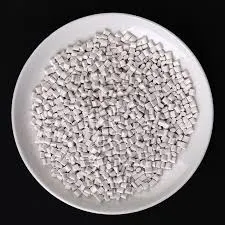Chemicals Used in Sewage Treatment Plants
Sewage treatment plants (STPs) play a crucial role in managing and treating wastewater to protect public health and the environment. The process involves various physical, biological, and chemical methods to remove contaminants. A variety of chemicals are employed throughout the treatment process to facilitate these methods. Understanding these chemicals' roles and functions is vital for optimizing the treatment processes and ensuring regulatory compliance.
1. Coagulants and Flocculants At the initial stages of sewage treatment, coagulants are used to remove suspended solids and colloidal particles. Common coagulants include aluminum sulfate (alum) and ferric chloride. These chemicals neutralize the charge on particles, allowing them to aggregate into larger clusters, or flocs, which are easier to remove during sedimentation. Flocculants, such as polyacrylamide, may also be added to enhance the formation of these flocs, improving the efficiency of solid-liquid separation.
Chemicals Used in Sewage Treatment Plants
3. Nutrients In biological treatment processes, particularly in activated sludge systems, nutrients such as nitrogen and phosphorus are essential for microbial growth. Chemicals like ammonium sulfate and potassium phosphate are often used to provide these nutrients. Proper nutrient management is critical; insufficient nutrients can lead to slow microbial growth, while excessive nutrients can result in unwanted algal blooms in receiving water bodies.
what are the chemicals used in stp plant

4. Disinfectants After the biological treatment processes, the effluent must be disinfected before it can be safely released into the environment. Common disinfectants include chlorine, ozone, and ultraviolet (UV) light. Chlorine is widely used for its effectiveness in killing pathogens; however, it can react with organic materials to form harmful byproducts. As a result, there is a growing trend towards using chloramine (a chlorine compound) or UV light as safer alternatives.
5. Deodorizers Odor control is another important aspect of sewage treatment, particularly in areas near residential neighborhoods. Chemicals like activated carbon and various biofilters are employed to eliminate unpleasant odors generated by the decomposition of organic waste. Additionally, specific deodorizing agents can be added systematically to manage odor emissions during storage and treatment.
6. Additional Chemicals Other chemicals include emulsifiers, which help break down grease and fats, and stabilizing agents like lime, which can aid in the stabilization of biosolids during treatment. The choice of chemicals often depends on the specific characteristics of the sewage being treated and the regulatory requirements that apply.
In conclusion, the chemicals used in sewage treatment plants are integral to ensuring the efficient and safe processing of wastewater. With continuous advancements in technology and a growing awareness of environmental impacts, the application and management of these chemicals will likely evolve, emphasizing sustainability and eco-friendliness in sewage treatment processes.

